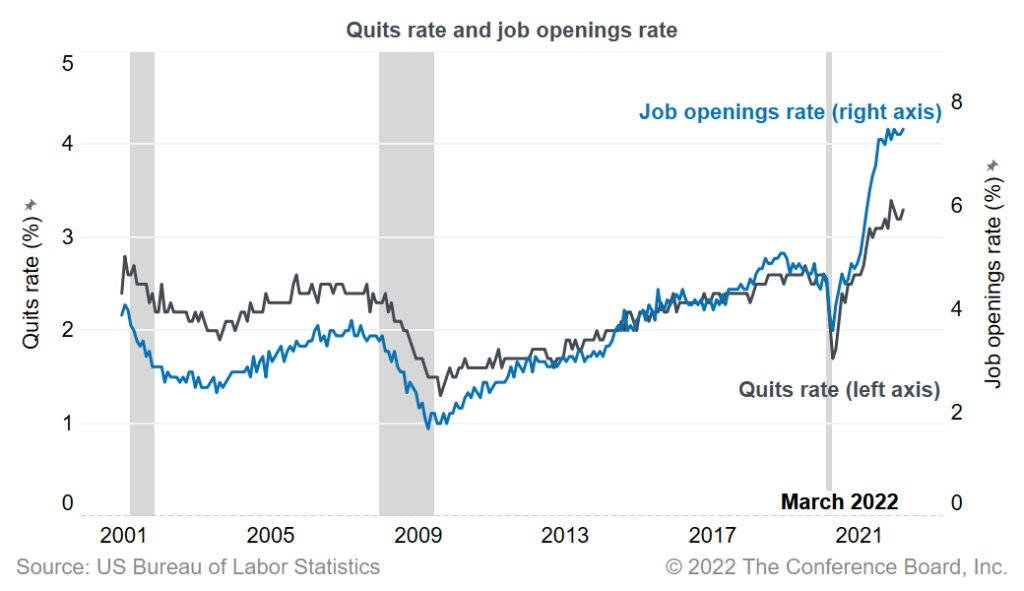Workforce management is a vital part of enterprise performance management for any organization.
With rapidly shifting market conditions, regulatory upheaval, rising employee turnover, growing pro-union sentiment, and an increasingly diverse and geographically-distributed workforce, workforce management is constantly becoming more crucial—and more complex.
Workforce management software can make this complex tax easier and more efficient.
In this article, we'll touch on:
- What is workforce management
- Why is workforce management important?
- The workforce management process
- What is workforce management software?
- Types of workforce management software
- Key features of workforce management software.
Let's dive in.
What Is Workforce Management?
Workforce management (WFM) refers to the practice of strategically allocating, tracking, and optimizing an organization’s most important resource: its people.
Successful workforce management ensures that the right employees—with the right skill sets—are available at the right time to meet the requirements of their jobs.
While each organization has its own priorities, resource efficiency is one goal that most businesses share.
Why Is Workforce Management Important?
Whether your workplace is an established corporate environment, a growing startup, or a business that employs shift workers, workforce management is an indispensable part of your business management strategy.
Effective workforce management helps organizations keep their workforce as productive and cost-effective as possible.
Inconsistent workforce policies, and insufficient enforcement of these policies, may result in challenges, such as:
- Staffing shortages
- Redundant employees
- Underskilled employees
- Increased project costs
- Delayed project delivery
- Compliance violations
- Avoidable overtime
- Workplace safety incidents
- Under-engaged employees
- Low employee morale or burnout
- High employee turnover.
As such, workforce planning is a crucial aspect of talent management, helping human resource professionals to:
- Optimize employee productivity
- Ensure projects are resourced efficiently
- Streamline performance management
- Upskill employees as needed
- Address staffing challenges early on
- Gain an accurate view of labor costs
- Reduce organizational risk
- Promote workplace safety
- Comply with workplace laws and regulations
- Implement succession planning initiatives
- Improve employee engagement and reduce turnover.

The Workforce Management Process
At its heart, the workforce management process entails identifying the organization’s key strategic priorities and allocating resources accordingly. This necessitates anticipating potential human resource challenges and taking steps to remain efficient and avoid liabilities.
The workforce management process includes tasks like:
- Strategic alignment
- Demand forecasting
- Employee scheduling
- Timekeeping
- Attendance tracking
- Data analysis
- Employee empowerment
- Skills management
- Payroll management
- Project scoping and budgeting
- Task management.
There’s a lot to cover!
The good news is that all of this can be streamlined and automated with the help of workforce management software.
What Is Workforce Management Software?
A workforce management software (WFM software) solution is a tool that enables organizations to organize their workforce policies and automate many of the tasks and processes in their workforce management system.
This allows human resource professionals to deploy their labor force more effectively, manage workers’ time more productively and, ultimately, achieve their organizational objectives with less hassle.
What are the benefits of workforce management software?
WFM software makes it easier for management to streamline scheduling, manage attendance and time tracking, track productivity, optimize performance management, perform payroll operations, ensure regulatory compliance, and promote employee safety.
When implemented and used effectively, the right workforce management solution can help employers:
- Automate manual tasks to save time, remove bottlenecks, and reduce errors.
- Gather accurate, up-to-date workforce data and make better decisions informed by real-time data analysis.
- Deploy omnichannel workforce management to offer greater access to your hybrid or mobile workforce.
- Improve cross-team efficiencies to improve collaboration and employee engagement while removing silos and reducing redundancy.
- Reduce operational costs (stemming from overstaffing, excessive overtime, and outsourcing) through more accurate forecasting and resource allocation. Advanced WFM solutions will even update budgets based on scheduling changes.
- Optimize the customer experience through skills-based routing that matches customers with the right contact center expert
- Spread the administrative load through manager and employee self-service portals that give users access to select functions
- Improve payroll accuracy by automatically reconciling time tracking, paid time off, logged overtime, etc., reducing instances of human error that can result from manual data entry and calculations.
- Proactively flag and address scheduling issues in advance by consulting real-time staff scheduling data and making adjustments to avoid problems like understaffing. The best workforce management software even allows managers to create smart schedules by filtering by department, project, job, or location.
- Keep accurate and detailed records that help to demonstrate regulatory compliance in the event of an audit.
What are the types of workforce management software?
There is a wide range of different WFM software tools. Some are standalone products that offer one or more of the functions listed below, while others offer a more holistic, integrated solution.
- Scheduling software
- Attendance software
- Project management (Kanban, etc.) and communication tools
- Time tracking software
- Absence management solutions
- Payroll software
- Employee engagement tools
- Customer relationship management tools
- Customer service & support ticketing solutions
- Workplace safety incident tracking software.
What are the key features of workforce management software?
The best workforce management software solutions allow modern businesses to organize and track all the activities involved in maintaining an efficiently-staffed, cost-effective, and productive workforce.
Below are some of the key features to look for in WFM software:
Labor needs forecasting
A decent WFM solution should be able to help you spot trends and forecast factors that impact staffing requirements and availability, such as changing project timelines, seasonal shifts in worker availability, fluctuations in consumer/customer demand, and more. By anticipating these scenarios, you can better plan your labor budgets and allocate staff more efficiently.
Smart scheduling
Any workforce software tool worth its salt should include intelligent scheduling capabilities that let managers pick staff for shifts or projects based on criteria like availability, skills, cost, experience, preference, location, and more. Shift scheduling tools should also offer employee self-service access to allow staff to exchange shifts among themselves to ensure full shift coverage.
Time tracking
A workforce management tool should feature or be able to integrate with time-tracking devices and tools like access scanners, cloud-based time-tracking software, kiosks, point of sale devices (POS), mobile apps, or online timesheets to capture time-tracking data and automatically process it for accurate payroll management. Overtime alerts are another useful feature that gives employers more control over overtime approval and allocation.
Attendance and absence management
Workforce management software should track employee attendance, automate time-off-request approvals, and reconcile employee absenteeism against company policies around leave of absence (such as paid time off (PTO)), and government regulations.
Data analytics and reporting
Most workforce manager tools grant users a real-time view of workforce data via customizable dashboards. This makes it easy to spot potential scheduling or staffing issues and correct them well before they become problems. The best workforce management tools will also allow users to generate reports using specific parameters, improving business intelligence and workforce planning through the analysis of historic data.
Mobile workforce management
WFM tools that offer access via mobile device make it easier to manage schedules and fill shifts on the go, helping to ensure optimal staffing coverage even in emergencies.
Employee self-service
Your workforce suite or tool should ideally provide an employee self-service portal that lets employees quickly enter their own data whenever feasible to free up HR time and reduce errors.
Powerful integrations with business tools
Whichever WFM solution you choose should be able to play nicely with the HR software and business tools your organization already uses. This is especially important if you don’t have a holistic workforce management suite and use various specialized tools.
The right software will make the process of implementing, tracking, and improving your workforce management system much more efficient and rewarding.
A Happy Workforce Is Key To A Successful Business
Effective workforce management will aim to keep employees happy as well as meet the strategic needs of your business.
Companies that can nail this aspect of their operations will be more efficient, innovative, and resilient.
Technology is advised for all but the smallest of businesses. To help get you started, check out our shortlist of the best workforce management software and our recommendations for time and attendance software to manage and optimize your workforce's time and attendance effectively.
Related read: Best Leave Management Software for Tracking PTO
Need expert help selecting the right Workforce Management Software?
If you’re struggling to choose the right software, let us help you. Just share your needs in the form below and you’ll get free access to our dedicated software advisors who match and connect you with the best vendors for your needs.



